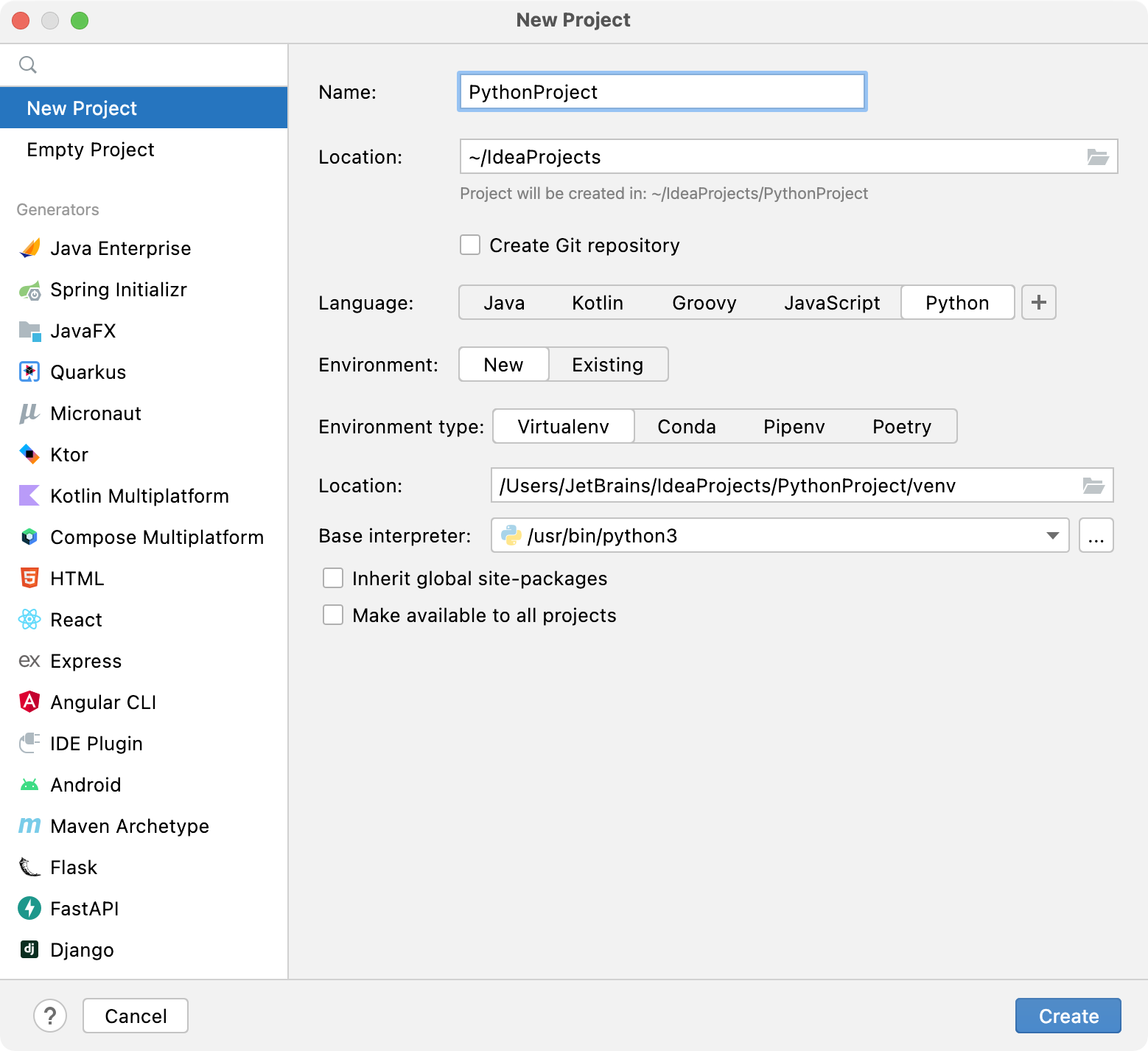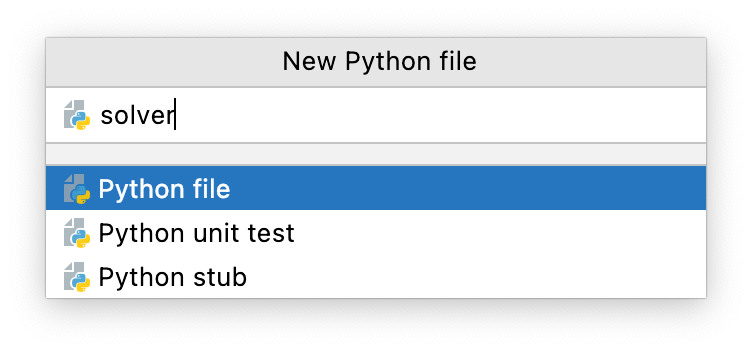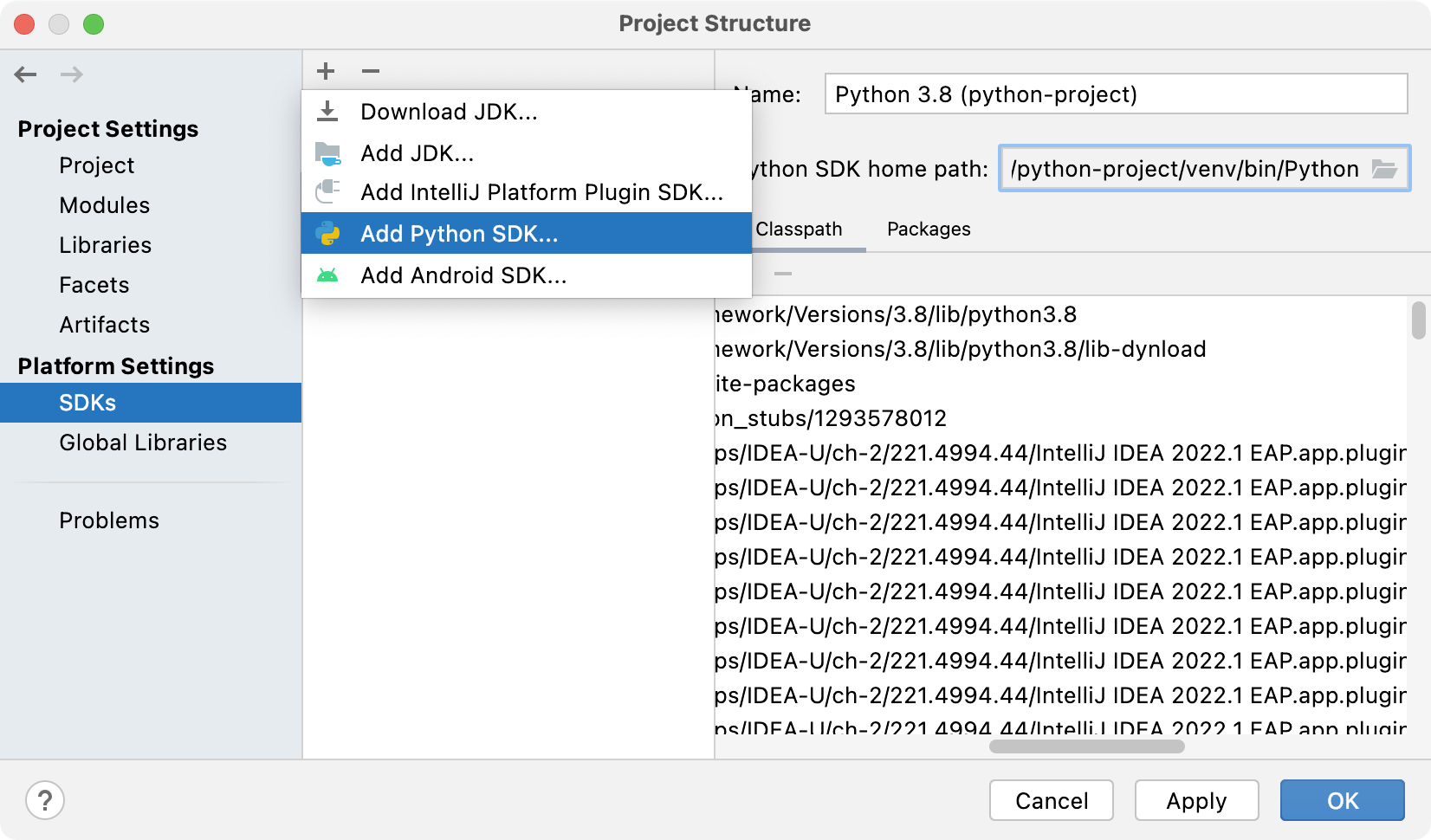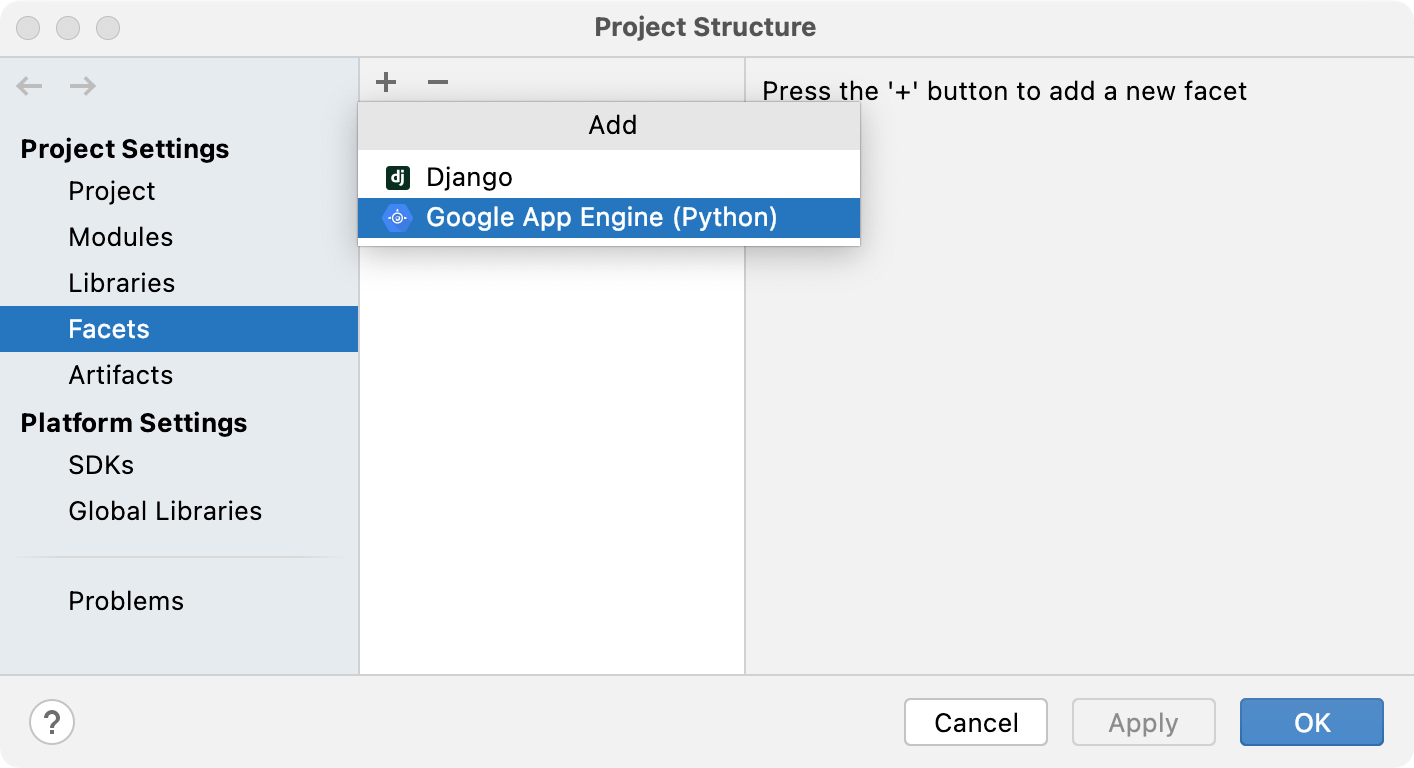Python
Last modified: 11 February 2024warning
The following is only valid when the Python plugin is installed and enabled.
Python Plugin extends IntelliJ IDEA with the full-scale functionality for Python development.
Prerequisites
Before you start working with Python, make sure that Python plugin is installed and enabled. Press CtrlAlt0S, go to Plugins and inspect the Installed tab to ensure the plugin is enabled.
Also make sure that the following prerequisites are met:
Python SDK is downloaded and installed on your machine.
The required framework SDKs are downloaded and installed on your machine.
For more information, refer to their respective download and installation pages:
Changes to the UI
Being installed, the Python Plugin introduces the following changes to the IntelliJ IDEA UI:
Python module type is added to the New Project and New Module wizards.

Python file type is added to the File | New menu. The Python file, Python unit test, and Python stub file types are available.

Python SDK can be specified in the Add new SDK popup under the SDKs node of the Project Structure dialog.

Django and Google App Engine (Python) are implemented as the facets, which can be attached to a Python module, either in the New Project dialog, or in the Modules or facets pages of the Project Structure dialog:
FacetsModules

Python-related commands are added to the Tools menu:

Python and framework-specific run/debug configurations, inspections, intention actions, and refactorings.
Besides that, the following changes are made to the Settings dialog:
Python code style, colors and fonts, live templates.
Python Debugger is added under the Build, Execution, Deployment node.
Python-related options add to the Stepping page.
Python console pages are added.
More Python-specific options are added to the Coverage page.
Python Template Languages, Python External Documentation, Python Integrated Tools, and Python Scientific pages are added.
The Scientific Mode option is added to the View menu.
Thanks for your feedback!